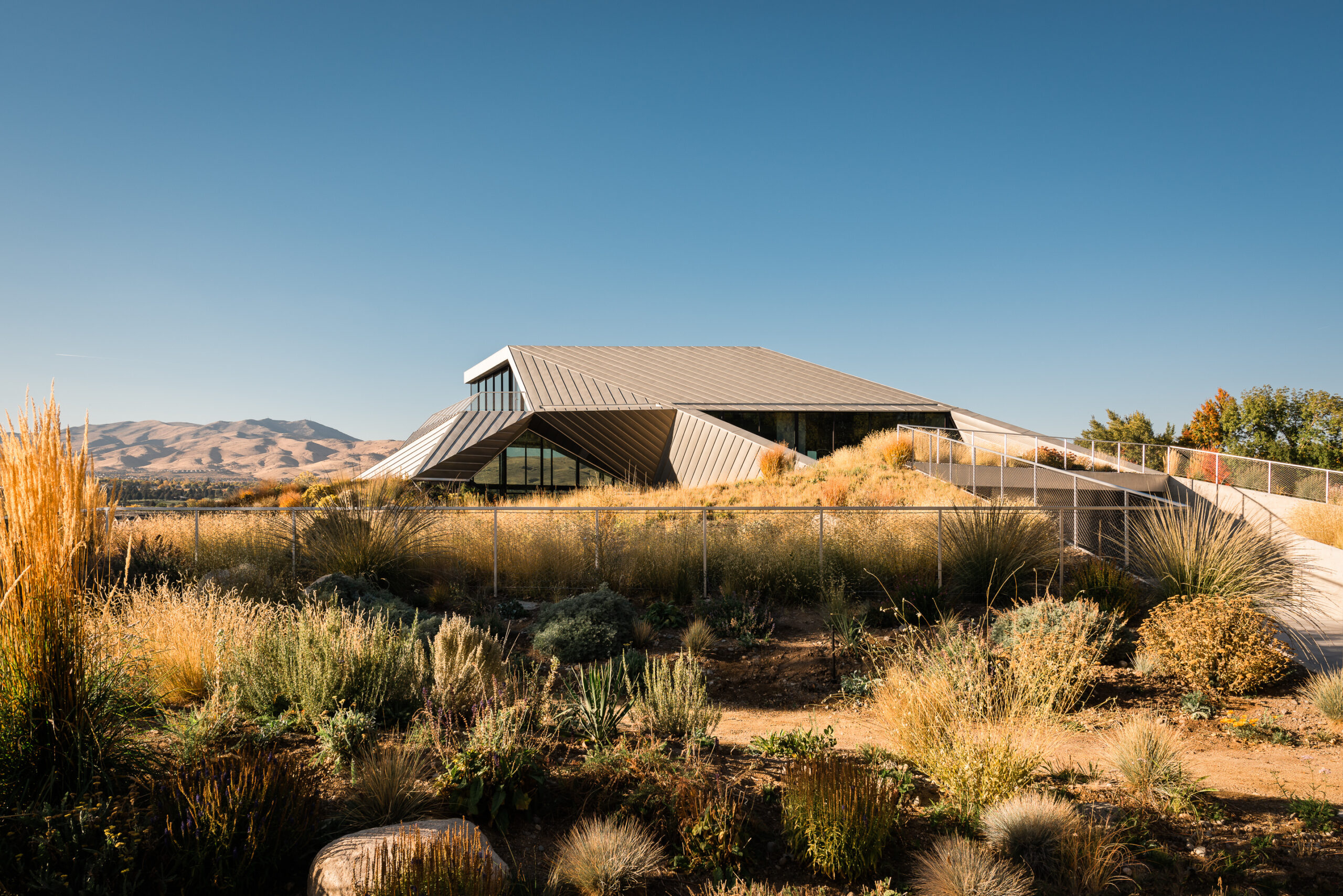Architects: Want to have your project featured? Showcase your work by uploading projects to Architizer and sign up for our inspirational newsletters.
Vietnamese architecture is deeply rooted in tradition, with design elements created to meet the demands of the country’s unique climate and cultural heritage. Traditional Vietnamese homes often feature high, sloping roofs to facilitate rainwater drainage during the monsoon season, wide eaves to provide shade from the tropical sun and open courtyards that encourage natural ventilation. These elements are both functional and aesthetically pleasing, creating a built environment that connects with nature.
In contemporary Vietnamese homes, architects increasingly draw inspiration from these vernacular principles, marrying them with modern design sensibilities. This approach not only honors the past but also ensures that homes are well-adapted to the local climate, promoting sustainability and comfort.
This collection highlights the technical and aesthetic strategies used to adapt traditional architectural principles to contemporary needs, showcasing the enduring relevance and adaptability of Vietnamese architectural heritage.
Flexible Façade House
By Space+ Architecture, Can Tho, Vietnam

 Flexible Façade House uniquely combines residential and business functions. Its standout feature is the “double-skin” wave façade of wood-grained aluminum, where each louver can rotate 360 degrees. This design offers flexible control over light, ventilation and privacy, making it ideal for the tropical climate of Southern Vietnam.
Flexible Façade House uniquely combines residential and business functions. Its standout feature is the “double-skin” wave façade of wood-grained aluminum, where each louver can rotate 360 degrees. This design offers flexible control over light, ventilation and privacy, making it ideal for the tropical climate of Southern Vietnam.
Despite its modest two-story structure, the facade system creates a sense of height and visual connection with neighboring buildings. The adjustable louvers help manage sunlight, airflow and noise, enhancing comfort and energy efficiency. The minimalist interior design maximizes space, with a future-ready ground floor for a clinic and a practical living area on the first floor, optimized for modern living needs.
QH-Villa
By Chi.Arch, Qui Nhơn, Vietnam
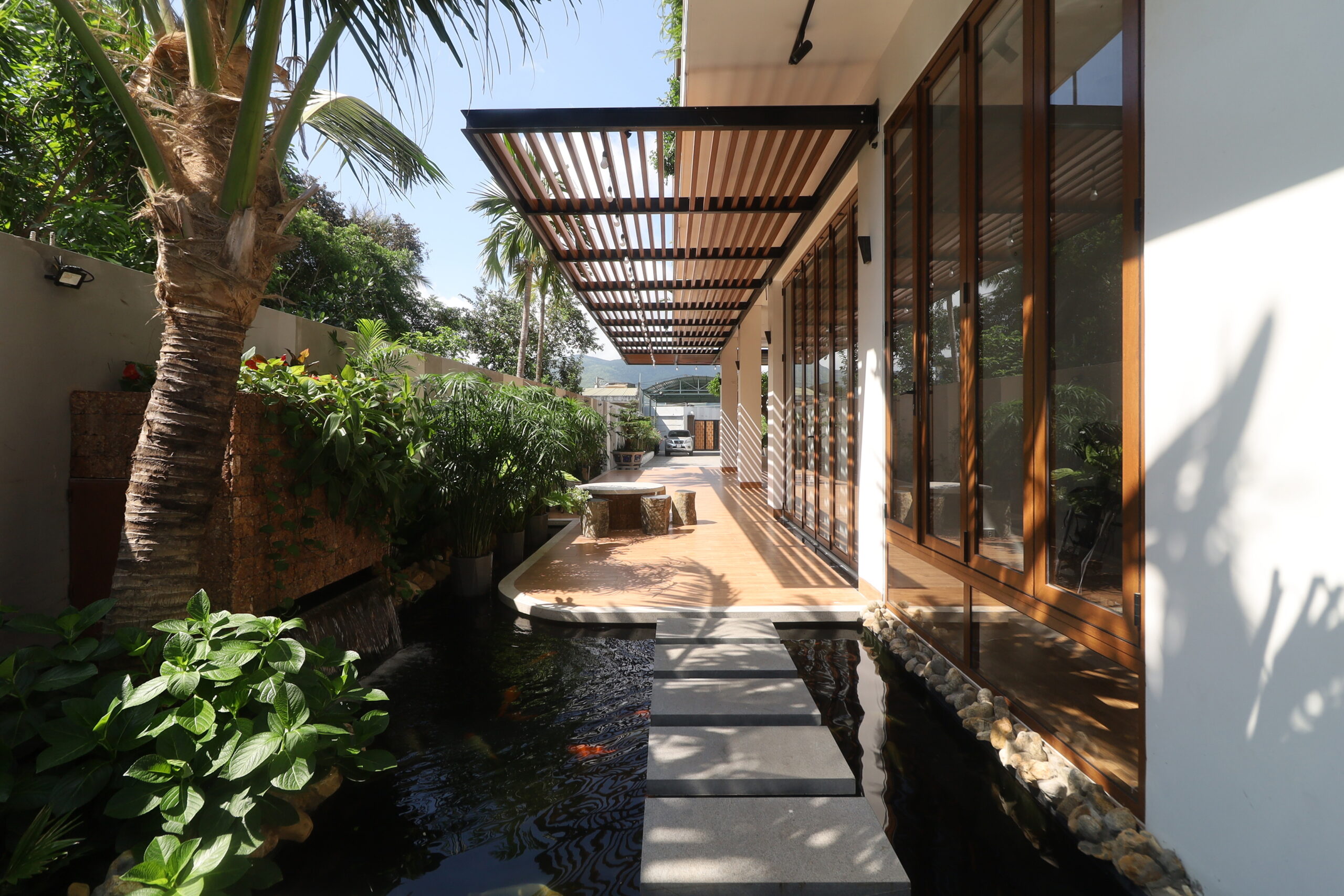
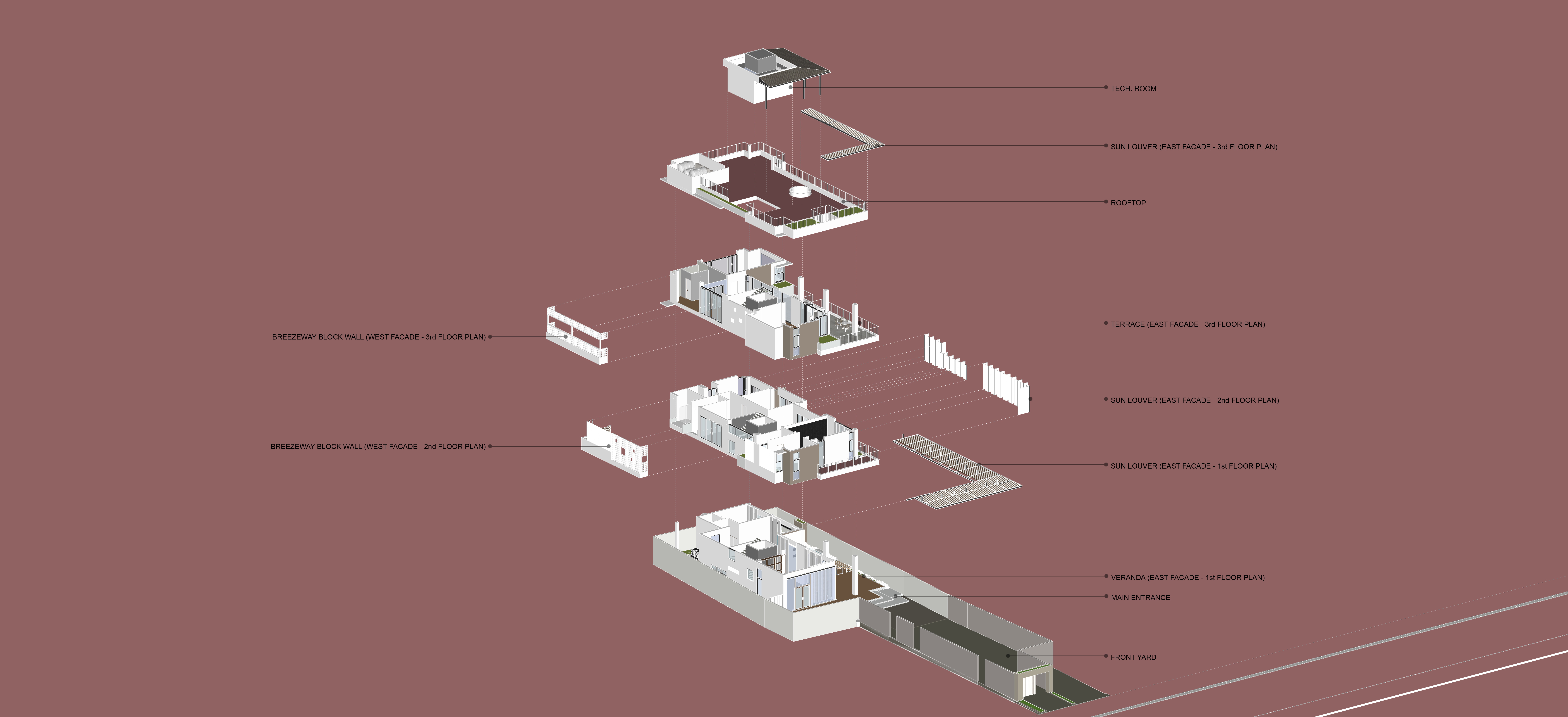 Situated at a major intersection in Quy Nhon city, QH-Villa is a modern tropical home designed for three generations. The site’s unique shape — a narrow façade opening to a wider rear — dictates its innovative layout. Drawing inspiration from traditional Vietnamese architecture, the villa features large verandas and balconies along the East-facing façade, providing shade and creating green spaces.
Situated at a major intersection in Quy Nhon city, QH-Villa is a modern tropical home designed for three generations. The site’s unique shape — a narrow façade opening to a wider rear — dictates its innovative layout. Drawing inspiration from traditional Vietnamese architecture, the villa features large verandas and balconies along the East-facing façade, providing shade and creating green spaces.
The design incorporates wide corridors, sunshades and breeze block walls to mitigate the tropical climate, ensuring natural ventilation and lighting throughout the house. The west side houses auxiliary functions and is separated by green balconies, emphasizing harmony between form, function and living space. Despite starting with an existing foundation and columns, Chi.Arch successfully reimagined the structure to balance modern and tropical aesthetics, reflecting Vietnam’s architectural heritage.
Bi House, A green resort at home!
By Pham Huu Son Architects, Nha Trang, Vietnam
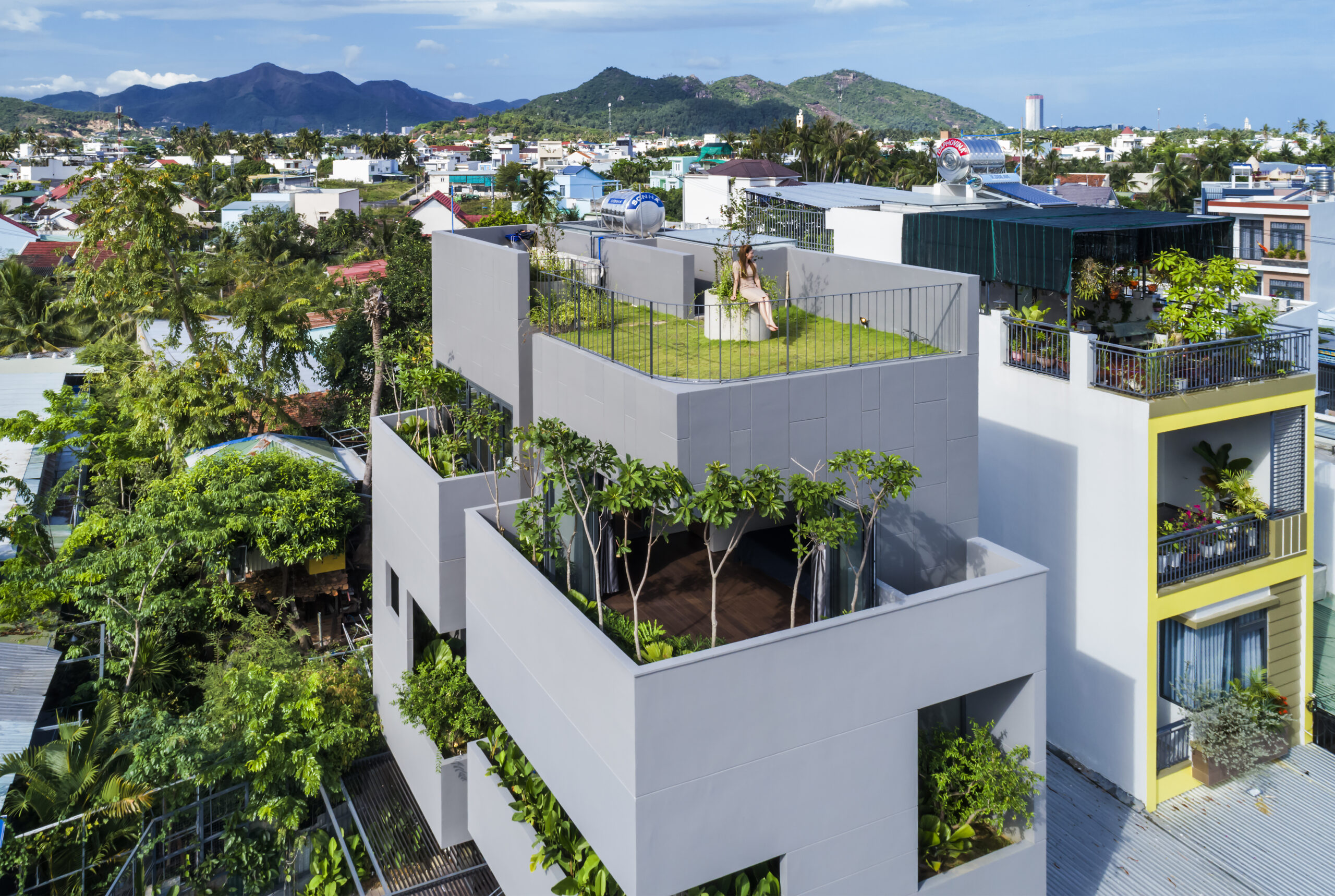
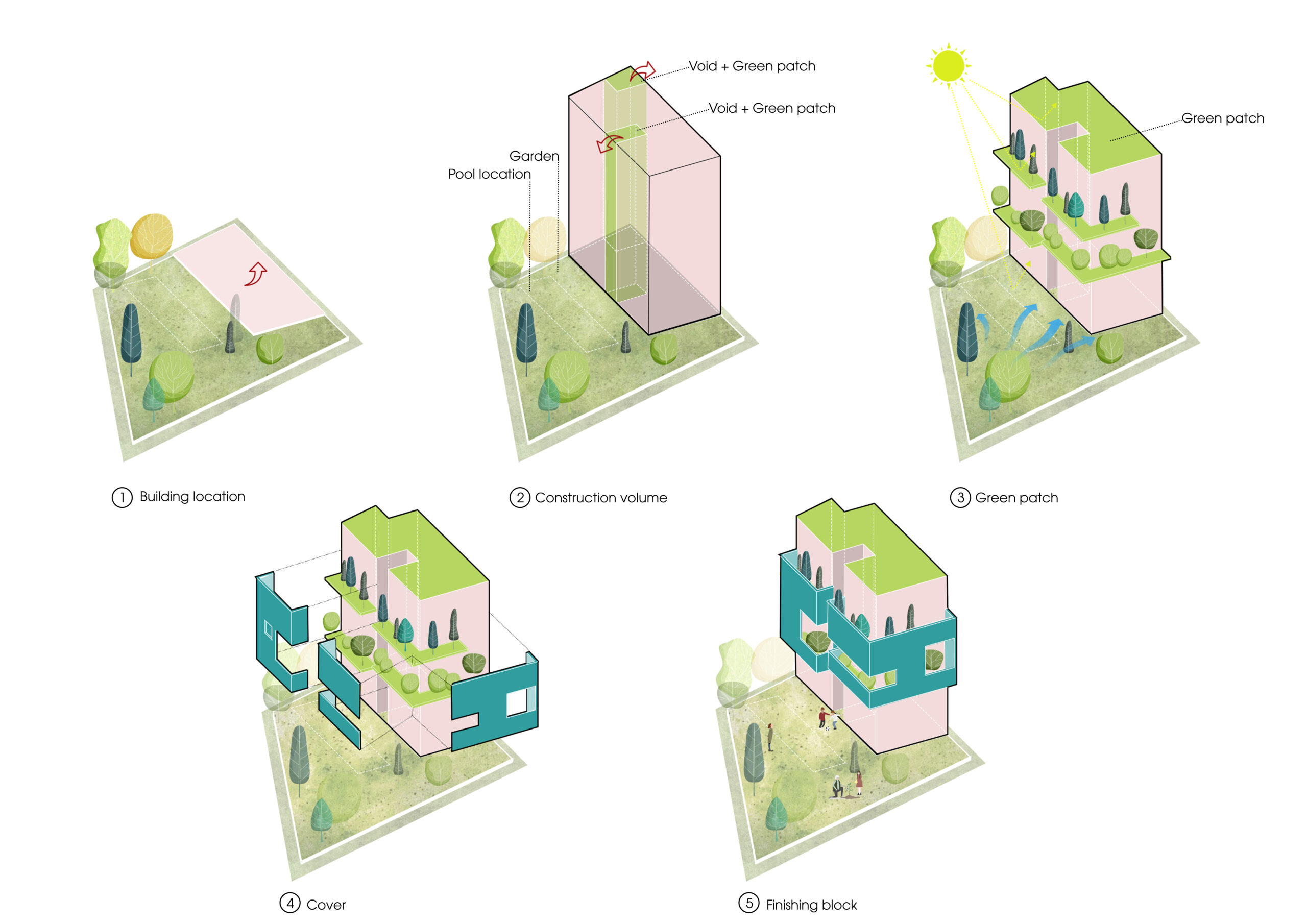
Bi House in Nha Trang integrates green architecture to combat urban heat and pollution. Designed with vertical green patches and a grassed roof, the house creates natural shields against heat, noise and dust. The layout includes ventilation gaps and a deep trench to enhance airflow and reduce heat absorption. Flexible glass panes bring natural light, minimizing energy consumption. This design highlights the fusion of modern living with sustainable practices, reflecting traditional Vietnamese architectural principles.
TA house
By M+TRO.studio, Hue, Vietnam
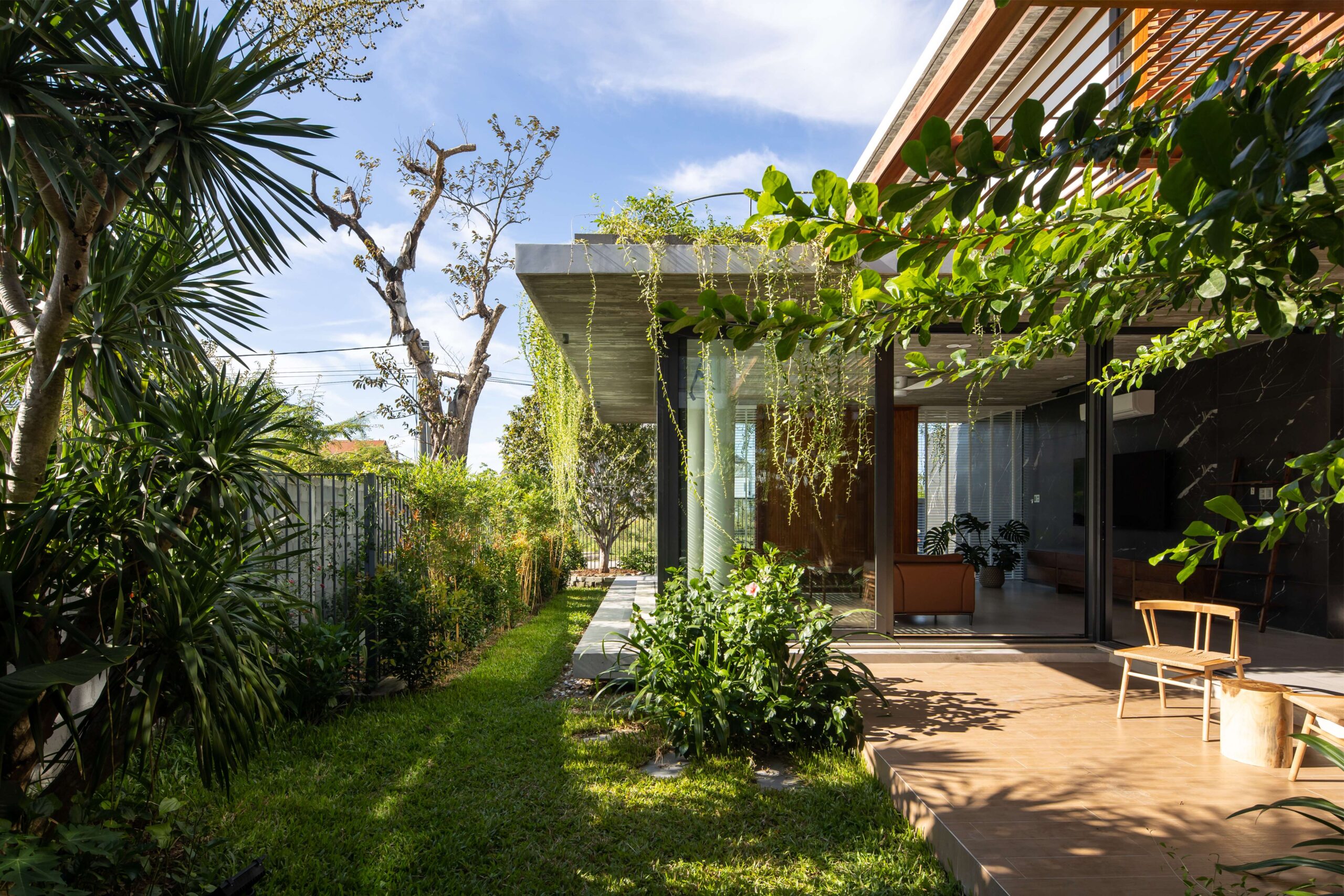
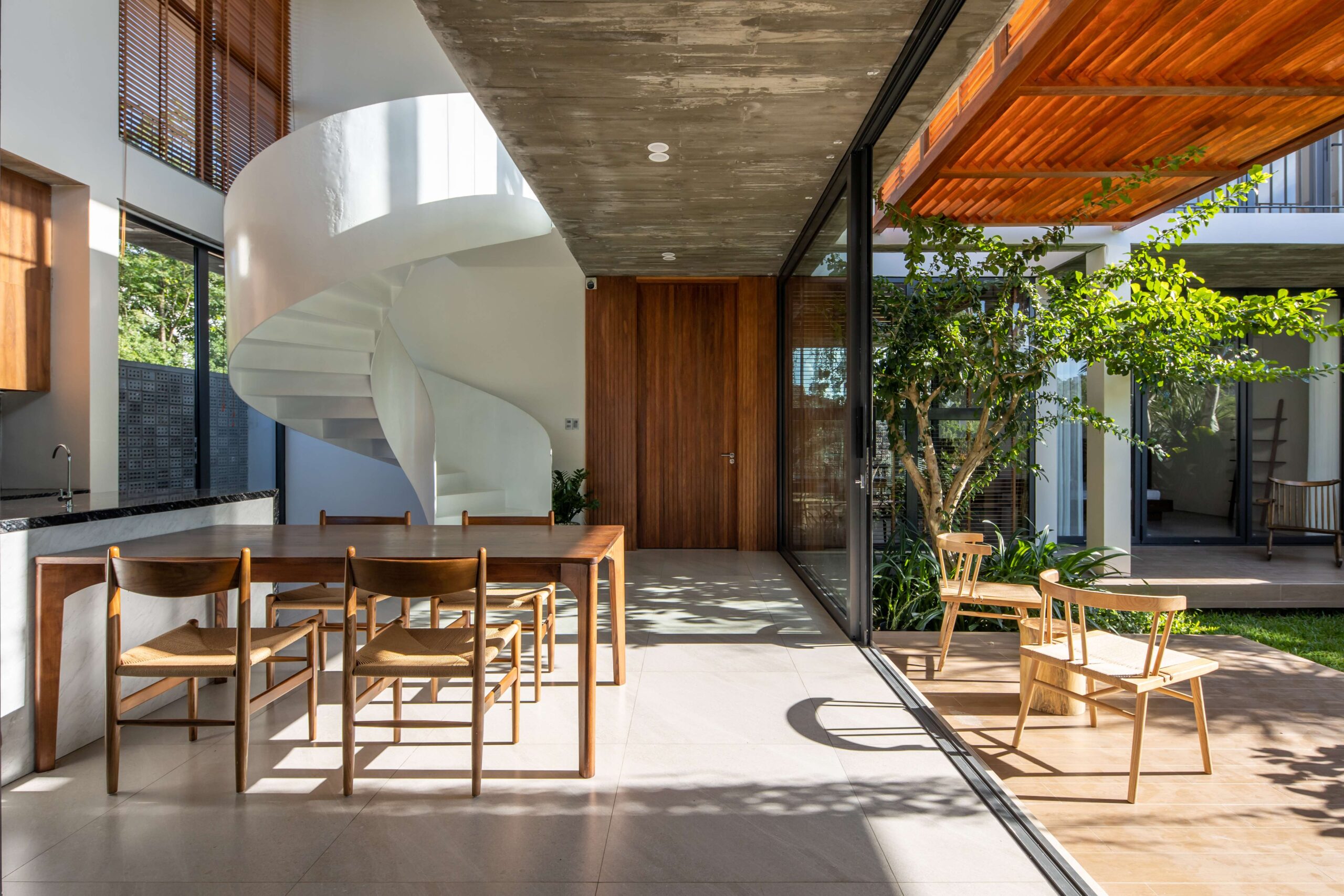 TA House in Hue is designed to integrate light, plants and wind, directly connecting indoor and outdoor spaces. The house features green areas arranged around living spaces, with large sliding glass doors providing a transition between common areas and nature, enhancing comfort and openness. Bedrooms face green spaces and can be opened to enjoy the natural atmosphere or closed for privacy.
TA House in Hue is designed to integrate light, plants and wind, directly connecting indoor and outdoor spaces. The house features green areas arranged around living spaces, with large sliding glass doors providing a transition between common areas and nature, enhancing comfort and openness. Bedrooms face green spaces and can be opened to enjoy the natural atmosphere or closed for privacy.
The structure includes a flat floor system without beams and a combination of a concrete roof and wood, protecting the house from the elements while maintaining elegance and lightness.
RY’s House
By BOW.Atelier, Cẩm Lệ District, Da Nang, Vietnam
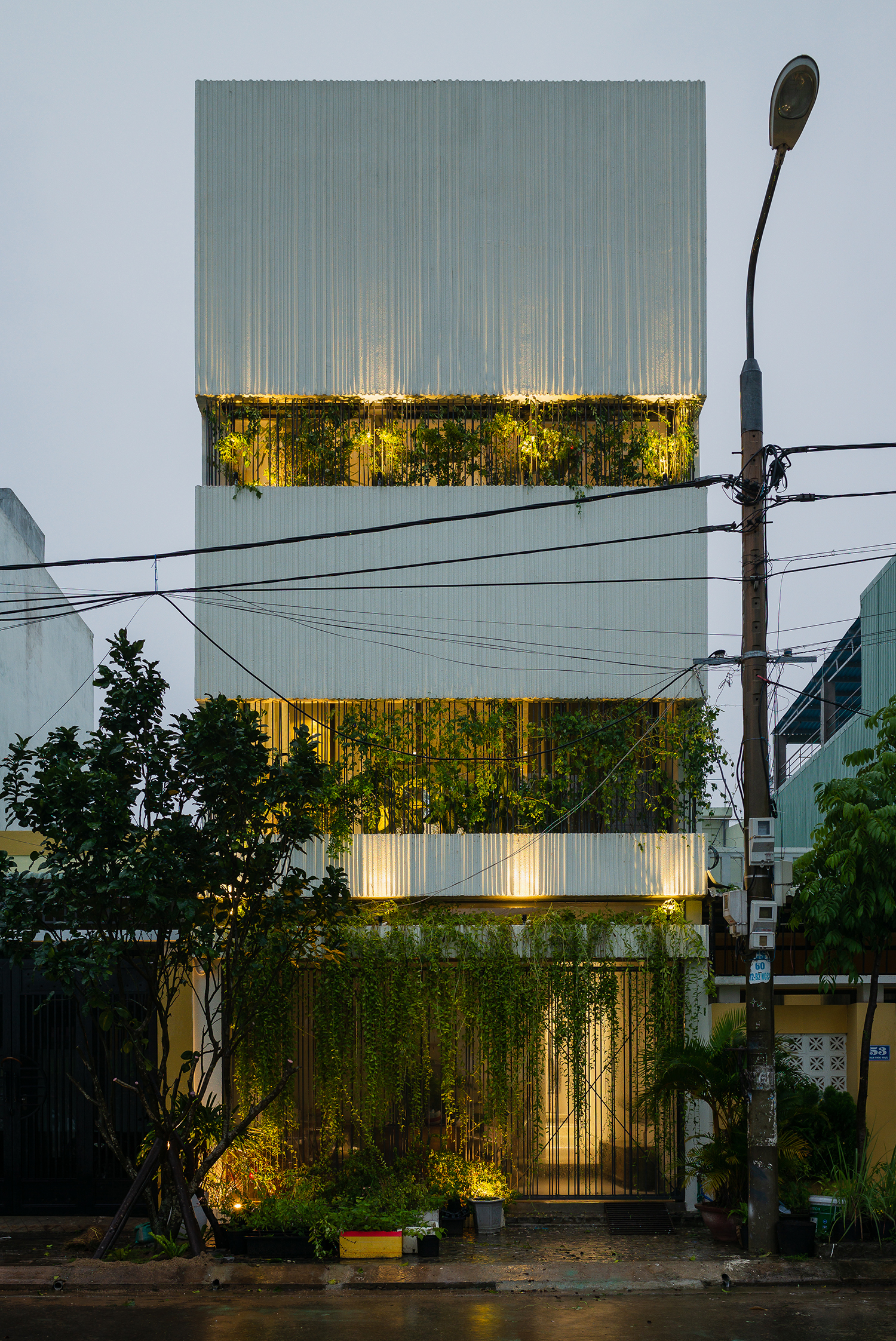
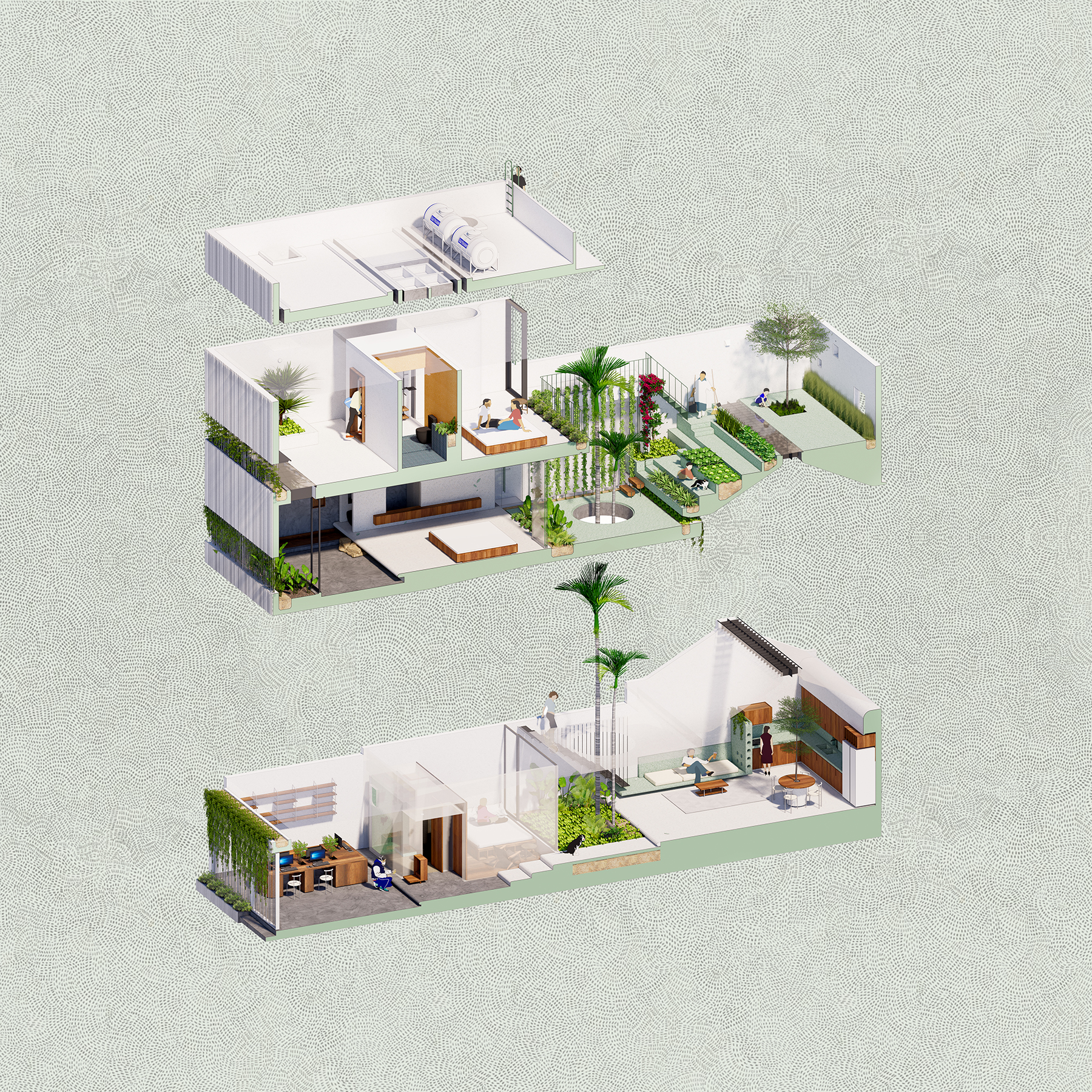 Located on a narrow plot in a rapidly developing area, this home is designed for a young couple who love gardening. The design emphasizes integrating light, greenery and human elements. The spatial structure features intersecting paths and gaps, creating a sense of surprise and fluidity enhanced by changing light and shadow throughout the day.
Located on a narrow plot in a rapidly developing area, this home is designed for a young couple who love gardening. The design emphasizes integrating light, greenery and human elements. The spatial structure features intersecting paths and gaps, creating a sense of surprise and fluidity enhanced by changing light and shadow throughout the day.
The façade combines simple walls with green porosity, reducing visibility and mitigating the west sun’s impact, directing focus inward. A key feature is the flexible green space at the back, which can function as a walkway, vegetable garden, or adaptable space, offering serene views from the bedrooms.
C6 house
By HCRA design, Xuân Hòa, Phúc Yên, Vietnam
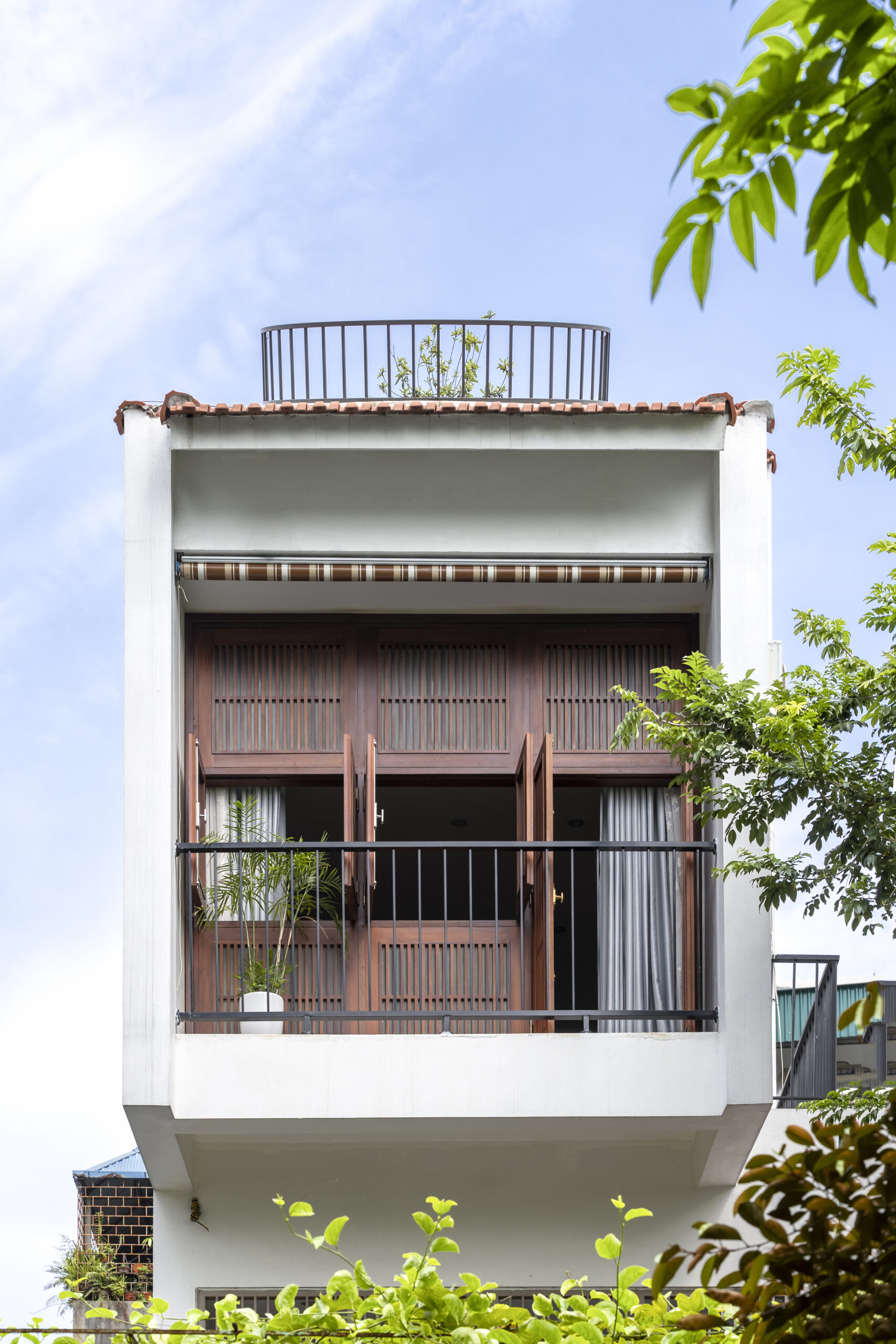
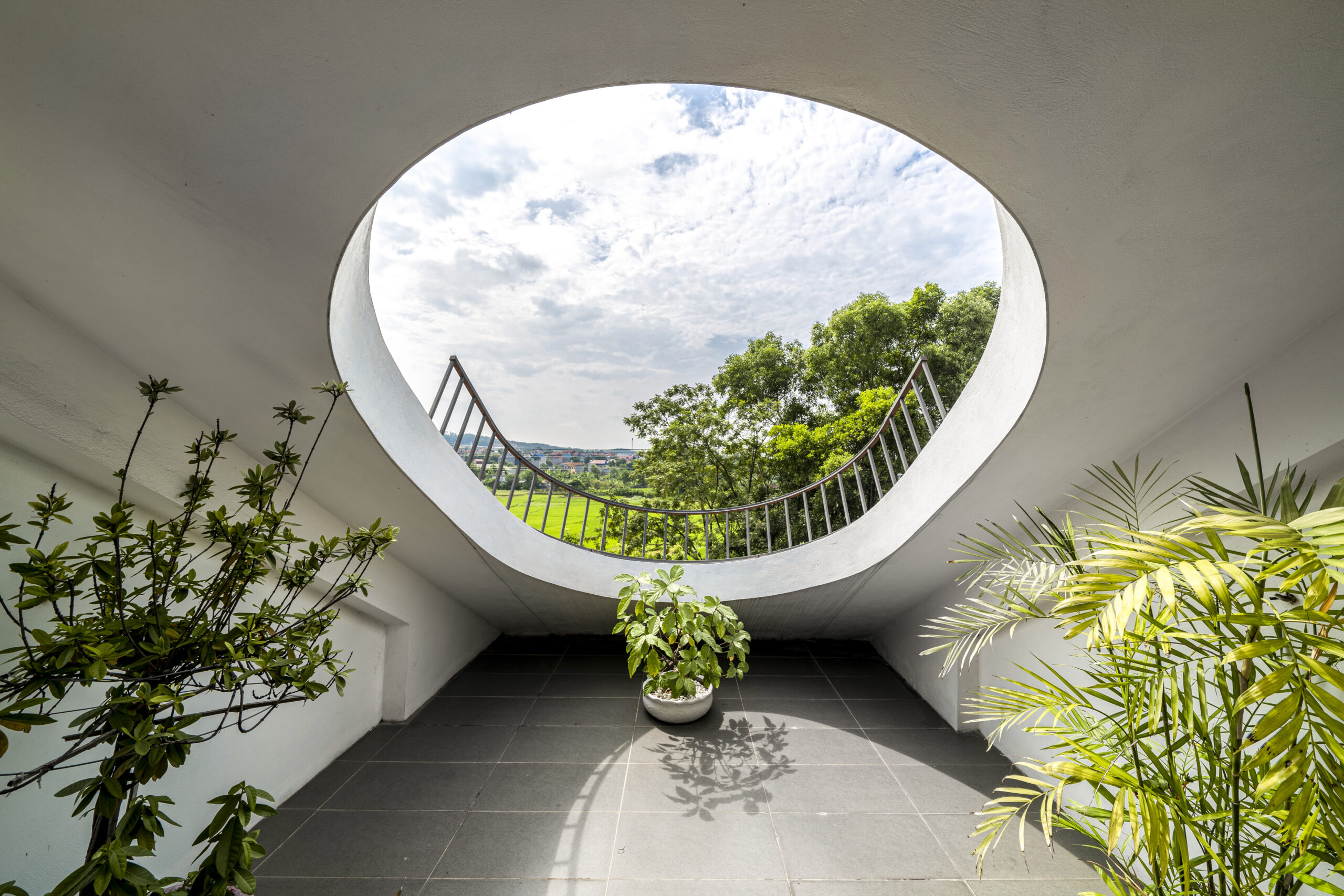 C6 House is designed for a young couple and their two sons. The “tube house” faces southeast, ideal for natural ventilation and views of the rice fields in front. The house uses a split-level structure to enhance airflow and foster family interaction through visible connections between floors. Primary spaces are oriented at right angles, while secondary spaces are set diagonally to manage the plot’s unique shape.
C6 House is designed for a young couple and their two sons. The “tube house” faces southeast, ideal for natural ventilation and views of the rice fields in front. The house uses a split-level structure to enhance airflow and foster family interaction through visible connections between floors. Primary spaces are oriented at right angles, while secondary spaces are set diagonally to manage the plot’s unique shape.
The first floor includes the living room, kitchen, dining area and guest bedroom. The second floor has the parents’ and children’s bedrooms, separated by a shared family space. The third floor features a worship area and storage, with a terrace overlooking the surrounding landscape.
The HIÊN
By WINHOUSE Architecture & Construction, Da Nang, Vietnam
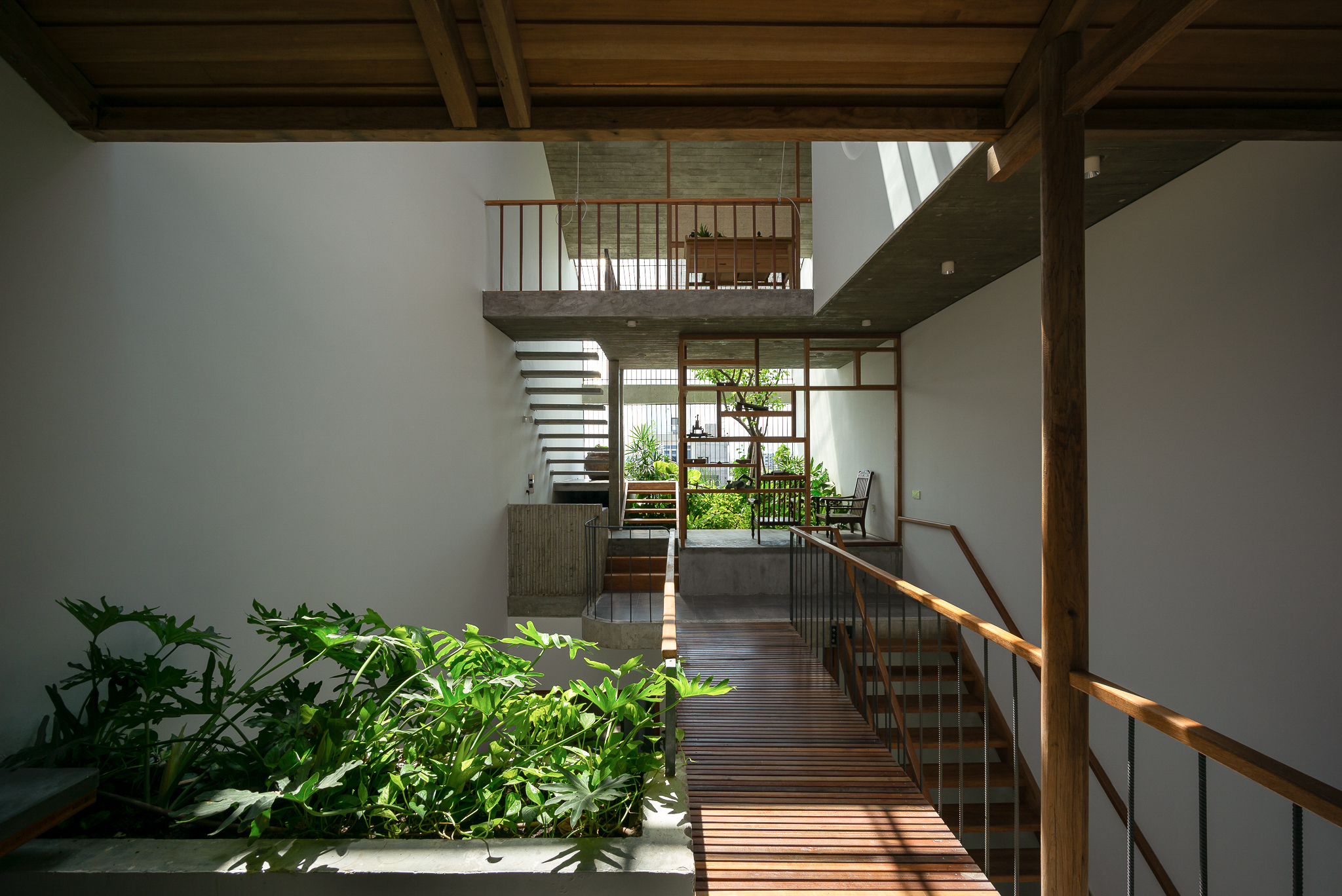 Designed for a multi-generational family with a woodworking tradition, the HIÊN (which translates to “veranda”) uses wood extensively, crafted by the homeowners themselves for cost savings and comfort.
Designed for a multi-generational family with a woodworking tradition, the HIÊN (which translates to “veranda”) uses wood extensively, crafted by the homeowners themselves for cost savings and comfort.
To retain their rural heritage, the design includes traditional elements like a “hiên”, serving as a buffer zone suited to the tropical climate. The layout mimics their countryside home, easing their transition to urban living.
Green spaces are integrated, including a vegetable garden, enhancing the connection with nature. Salvaged wood is used for the roof, stairs and furniture, ensuring sustainability and preserving natural characteristics.
VUx House
By 85 Design, Da Nang, Vietnam
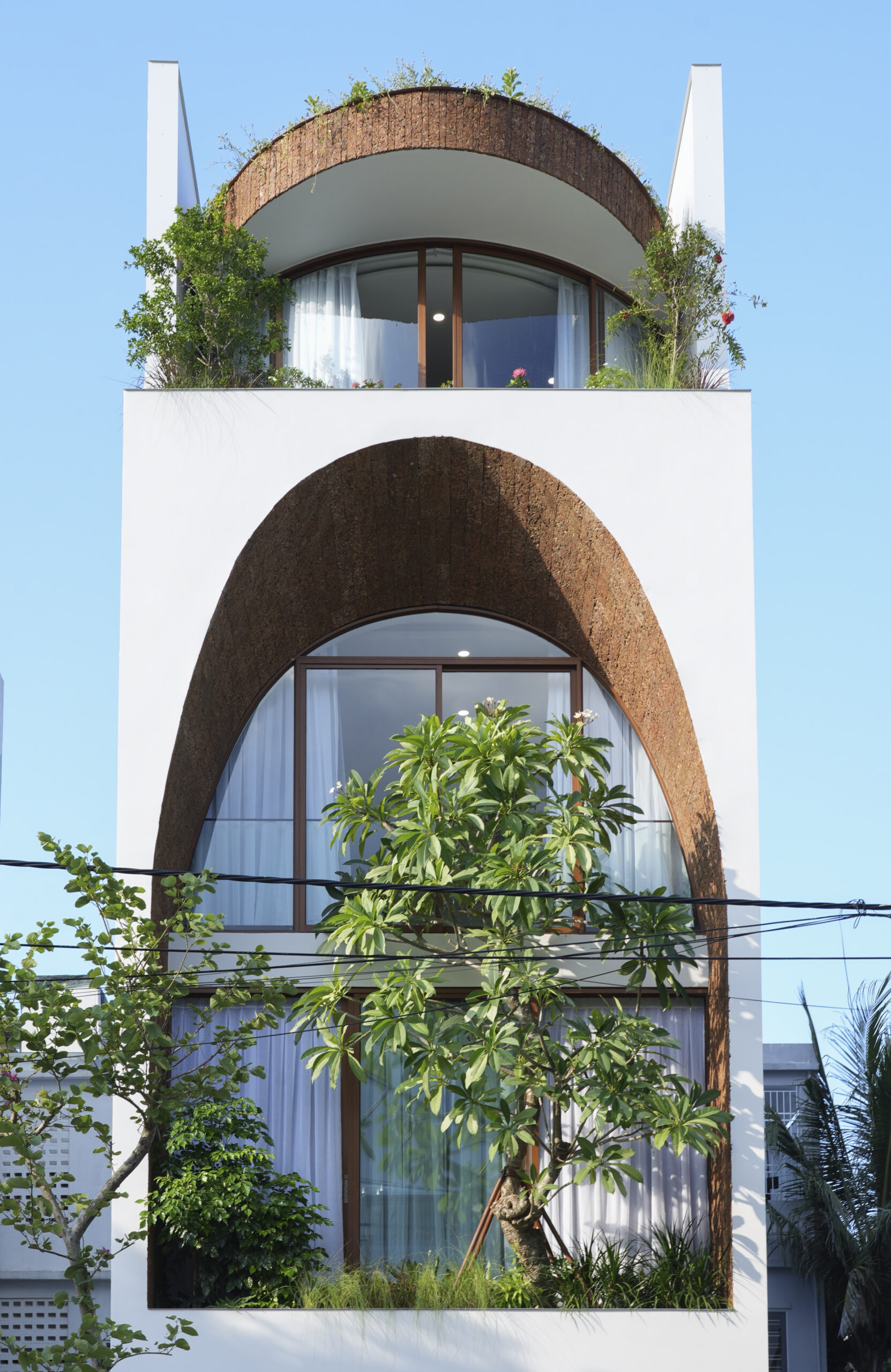
 This urban tube house on a 5m x 20m plot is designed for a family of five, solving typical issues of light and ventilation in narrow urban homes. The ground floor includes a parking area, seating and laundry space with a skylight. The first floor features a common room, kitchen, small bedroom and an aquarium with greenery.
This urban tube house on a 5m x 20m plot is designed for a family of five, solving typical issues of light and ventilation in narrow urban homes. The ground floor includes a parking area, seating and laundry space with a skylight. The first floor features a common room, kitchen, small bedroom and an aquarium with greenery.
The second and third floors have large front bedrooms, smaller rear bedrooms,= and a bridge corridor with a skylight and greenery. The fourth floor hosts an orchard garden for dining and relaxation. The roof includes XPS panels and insulated glass to limit UV rays, with automated systems for roof and plant care. Local materials like baked bricks and To Ong stone blend modern needs with traditional aesthetics.
Sun house
By Space+ Architecture, Cam Ranh, Vietnam

 Sun House is a contemporary minimalist home in Cam Ranh. The design blends modern and traditional elements, featuring an undulating sloping roof for rainwater drainage and harmony with neighboring houses.
Sun House is a contemporary minimalist home in Cam Ranh. The design blends modern and traditional elements, featuring an undulating sloping roof for rainwater drainage and harmony with neighboring houses.
Natural ventilation and lighting reduce energy costs, while a double-layer sliding door system on the main facade mitigates glare and heat. The centrally located kitchen under a circular skylight provides natural light and ventilation. Bedrooms offer privacy and comfort, connected by a steel suspension bridge.
Recycled materials and reused furniture preserve memories and cut costs. Sustainable design solutions like natural ventilation and lighting create a comfortable, energy-efficient home that honors traditional Vietnamese culture.
Architects: Want to have your project featured? Showcase your work by uploading projects to Architizer and sign up for our inspirational newsletters.
